{A Few Books set in Cambridge}
The Gate of Angels - Penelope Fitzgerald
Maurice - E.M. Forster {E.M. Forster was a grad of King’s College - The Longest Journey is also partially set here.}
Period Piece - Gwen Raverat {The granddaughter of Charles Darwin and an amazing woodcut artist, these are her memoirs of her life growing up in Cambridge.}
The Grantchester Mysteries
The Liar -
Jacob’s Room - Virginia Woolf {Virginia didn’t attend Cambridge, but famously gave two lectures here that she published as A Room of One’s Own.}
{Did you know?}
That the archives of one Cambridge’s most famous graduates, Charles Darwin, are held at the Cambridge University Library? In September 2001, two of Darwin’s working notebooks - including the notebook that contains his famous Tree of Life sketch - were taken out of storage to be photographed. During a routine check the following year, the library discovered that the notebooks had never been returned to their storage place. Hoping that they had just been misplaced (and presumably hoping that they would turn up one day), the library didn’t notify authorities for almost two decades. Then, one morning in March, 2022 - a little pink gift bag with a printed note that read “Librarian. Happy Easter. X” showed up at the librarian’s office. Inside were the missing notebooks. The investigation into where they have been all of these years is, as they say, ongoing.
{One piece of artwork not to miss if you visit}
Ford Maddox Brown’s The Last of England at the Fitzwilliam Museum.
The Pre-Raphaelite Ford Madox Brown painted himself and his wife as an emigrant couple, preparing to leave England for the last time, and the emotion on their faces is unforgettable. Brown was considering emigrating himself, at the time of the painting’s creation, having struggled to make a living as an artist in England.
{One Random Fact}
Oliver Cromwell died in 1658, but his body was exhumed in 1661 and he was “posthumously executed” for his role in the death of King Charles I. His body was decapitated and his head was mounted on a spike at the Palaces of Westminster. The head remained on the stake above Parliament for well over twenty years, until a great storm hit London and the head was blown from its spike. It went through a series of owners over the next several hundred years - until it was interred in 1960 at Sidney Sussex College in Cambridge, where Cromwell had attended classes when he was a teenager. The burial took place in secret, and the exact location of Cromwell’s head remains unknown.
{Five Questions with a Local, Part One}
writes Anne of Green Places. Anne is a recent graduate of Newnham College, Cambridge - and the blog that she kept during her time there, The Cambridge Placebook, is a wealth of information about the city and the University. I asked her five questions about her time at Cambridge:What is one word that describes Cambridge?
Palimpsest: Cambridge is a patchwork of practically geological accretions of history still visible in its architecture and geography and institutions, and despite its relatively small size, every inch has a story to discover.
2. Are there any hidden treasures in Cambridge…is there one place or thing that you feel more people should know about?
SO MANY.
An outdoor hidden gem: Ascension Parish Burial Ground, A half-wild 19th and 20th-century graveyard in a quiet Cambridge neighborhood, known for having the "highest collective IQ of any graveyard" for all the Cambridge dons it contains, the most famous resident being Ludwig Wittgenstein. It's also a nature reserve overflowing with ivy and daffodils and birdsong.
An indoor hidden gem: Kettle's Yard, the charming house of an eclectic art collector who left it to the University as a museum on the condition that it be kept the way it was when he and his wife lived there.
Others:
Cherry Hinton Chalk Pits: old chalk quarries turned into a tucked away nature reserve on the edge of Cambridge
Newnham College: Cambridge’s oldest women’s college that still bears the title, stunning Victorian red brick architecture and lovely English garden (also my old college)
3. What is a Cambridge experience not to be missed?
Going inside King's College Chapel is like standing in a vast grove of petrified trees dappled with the softly filtering colors of stained glass. Hearing a choral service adds a whole other dimension of sacred sound to the experience. If you don't catch an Evensong or Sung Eucharist service at King's, during term time there are many excellent college chapel choir services to choose from throughout the week, of which St. John's may be the best (and also has a gorgeous chapel).
4. If you could only eat one thing in Cambridge, what would it be?
Jack's Gelato (near King's College) has delicious gelato and snazzy flavors and sometimes massive queues, but if you can find a quiet moment or order ahead it's an excellent pick me up.
For lunch nearby, the Market Square has a nice selection of food stands; I'm partial to the noodles at the Malaysian place. Mill Road is where all the best brick-and-mortar international restaurants are.
5. Where is the best place to experience nature in Cambridge?
If you can get a little ways out of town, Wandlebury, an ancient hill fort in the Gog Magog Hills, is an enchanting patch of woods and meadows.
By foot or bike, Grantchester Meadows is a classic place to stroll and relax beside the River Cam.
Another excellent cycle is along the tow path of the Lower Cam from Jesus Green downriver into the countryside. The Cambridge University Botanic Garden is also a plant-y delight.
Thank you so much, Anne!
(Coincidentally, Anne just published a post about the Tree of Life, including Darwin’s drawing just this week. You can read it here.)
{Five Questions with a Local, Part Two}
lives in Cambridge and writes the blog Lost in the Archives. Ann researches the history of women in Cambridge, but also posts up-to-date news about literary and academic life in the city, in her series of Cambridge Notebooks. She, too, was kind enough to answer five questions about Cambridge for us…1. What is one word that describes Cambridge?
‘Diverse’: I’m thinking of its people – those who move here for a few years to study or work, others (like me) who decide to stay and bring up families, as well as the generations who have grown up in and around the city. When I moved to Cambridge almost 40 years ago I instantly fell in love with the beauty of the city: its ancient college buildings, cobbled streets and peaceful River Cam. That feeling hasn’t changed, but over the years I’ve learned that the jewel in this university city’s crown is the wide international range of people who come here to live, study and work here, and the opportunities there are in Cambridge to share their culture.
2. Are there any hidden treasures in Cambridge…is there one place or thing that you feel more people should know about?
The college buildings including King’s College Chapel in Cambridge are so breathtakingly impressive that it’s easy to miss the hidden gem that is the David Parr House, tucked away in a quiet Victorian terraced street near the railway station. The tiny cottage was bought in 1886 by David Parr, a working-class painter-decorator, who spent 40 years decorating the interior of his modest family home (on days off or in the evenings, by candlelight) in the style of the grand houses and churches he painted in his day job. The stunning hand-painted walls and ceilings are a testament to the values of the Arts & Crafts movement and the dedication of this remarkable decorative artist and craftsman. You’ll need to book a ticket in advance. Just opposite is Hot Numbers Coffee, a relaxing place to sit and take in what you’ve experienced.
3. What is a Cambridge experience not to be missed?
Punting along the River Cam, of course. Go straight to Scudamore’s to book a tour (or negotiate the best price from one of the many ‘touts’ on King’s Parade) and be transported smoothly along the Backs, taking in the gorgeousness of the colleges and bridges and hearing about the university’s history. Or rent one and punt yourself - it’s great fun. Take a picnic and have fun exploring the much quieter Upper River all the way to Grantchester with its magical meadows.
4. If you could only eat one thing in Cambridge, what would it be?
It’s not the healthiest of options, but it has to be a Chelsea bun from Fitzbillies bakery and café on Trumpington street. The Fitzbillies version of this sweet and sticky English treat came into its own in the 1950s, a time of food rationing in the UK. The food writer Jane Grigson recalls ‘the most anxious queues’ outside Fitzbillies in Cambridge. ‘No undergraduate tea party was complete without their Chelsea buns, syrupy, well spiced, licentious and exceptional during the years of ersatz cakes and shortages. I still think they are the best Chelsea buns I have ever eaten.’ There are still (less anxious) queues outside Fitzbillies and I’m happy to report that the buns haven’t changed.
5. Where is the best place to experience nature in Cambridge?
For me, it’s one of Cambridge’s best-kept secrets: the gardens of Newnham College for women. Tucked away behind a busy avenue are 17 acres of lawns, a lily pond, a nutwalk, a vegetable patch, a sunken rose garden and much more. Unlike many colleges, Newnham students are permitted to walk and picnic on the lawns, and the gardens are open to the public for most of the year. Don’t miss the Old Labs with wildflower areas in bud from February to July, or the English oak planted by William Gladstone in 1887. His daughter Helen Gladstone was Vice-Principal there, and changed her father’s mind about women in higher education. It’s appropriate that the gardens are designed to be at their peak in May and June of each year, the months most students graduate. Cambridge University was the last higher education institution in the UK to award women degrees (in 1948). So Newnham’s beautiful gardens are a great place to celebrate all the women who refused to give up, and fought for the right to study, live and work in Cambridge.
You can take a virtual tour here: A Tour of the Gardens at Newnham College.
Thank you so much, Ann!
(You can read Ann’s post about Gwen Raverat and her book Period Piece here.)
{One Mistake Not To Make}
I went to Fitzbillies and didn’t order a Chelsea Bun. I’ve regretted it ever since. Don’t make the same mistake as me…get the Chelsea Bun!
{Cambridge virtual address book}
Cambridge Imprint - Cambridge Imprint makes the MOST beautiful and colorful paper products.
Heffer’s Bookstore - A Cambridge institution.
Pepys’ Library, Magdalen College
The Wren Library at Trinity College
Cambridge University Museum of Zoology
Ascension Parish Burial Ground
Cambridge Shakespeare Festival
I wrote about my experience in Cambridge here: A Letter from Cambridge.
What am I missing? What are your favorite spots in Cambridge? Please let me know in the comments!


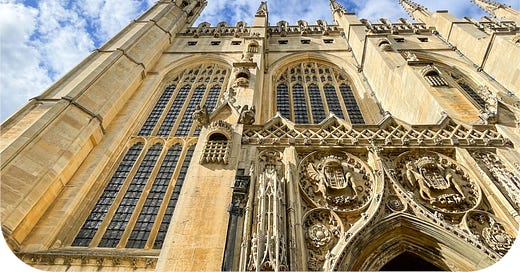



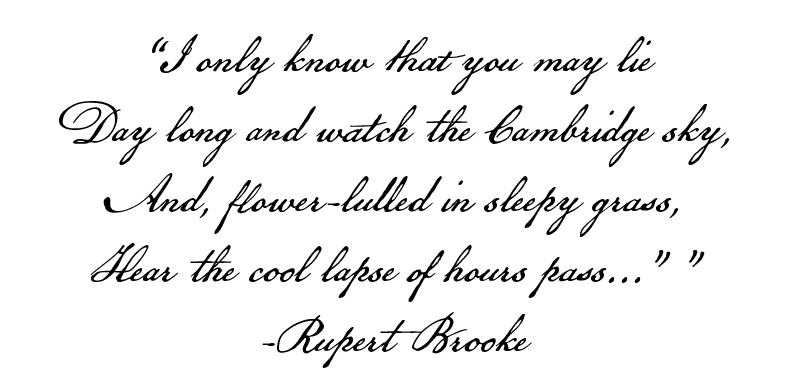


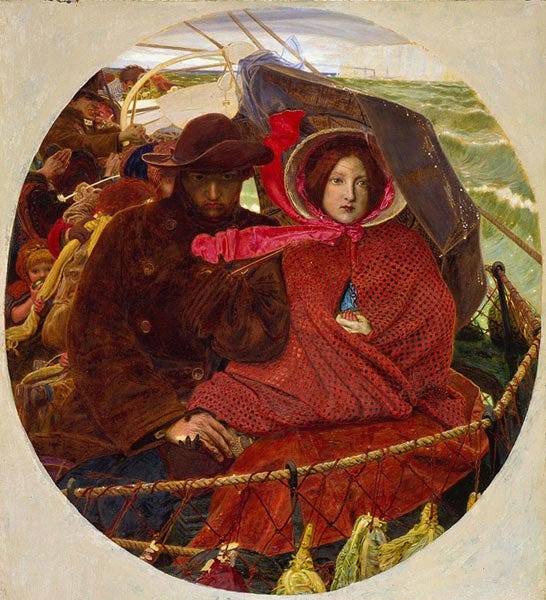
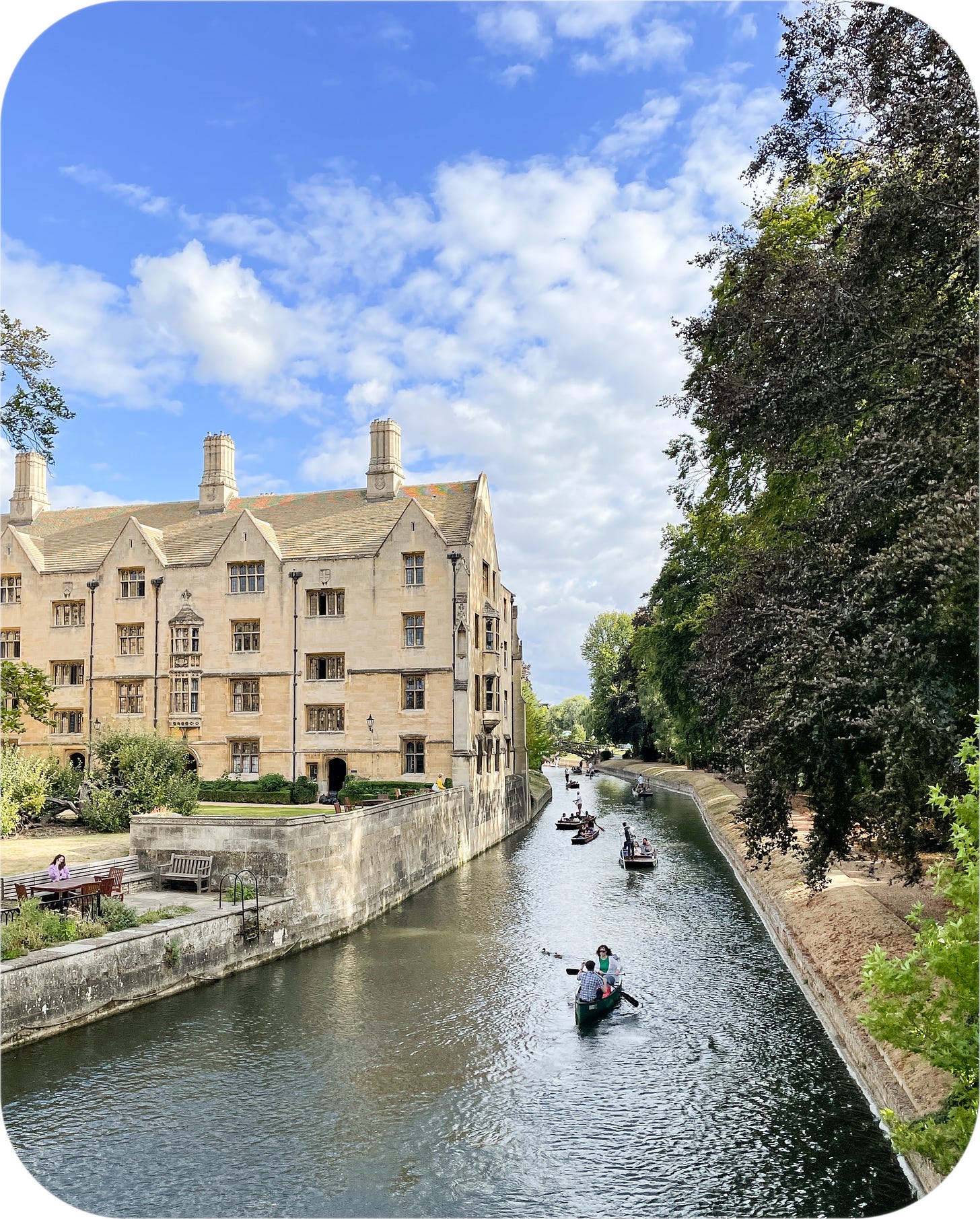


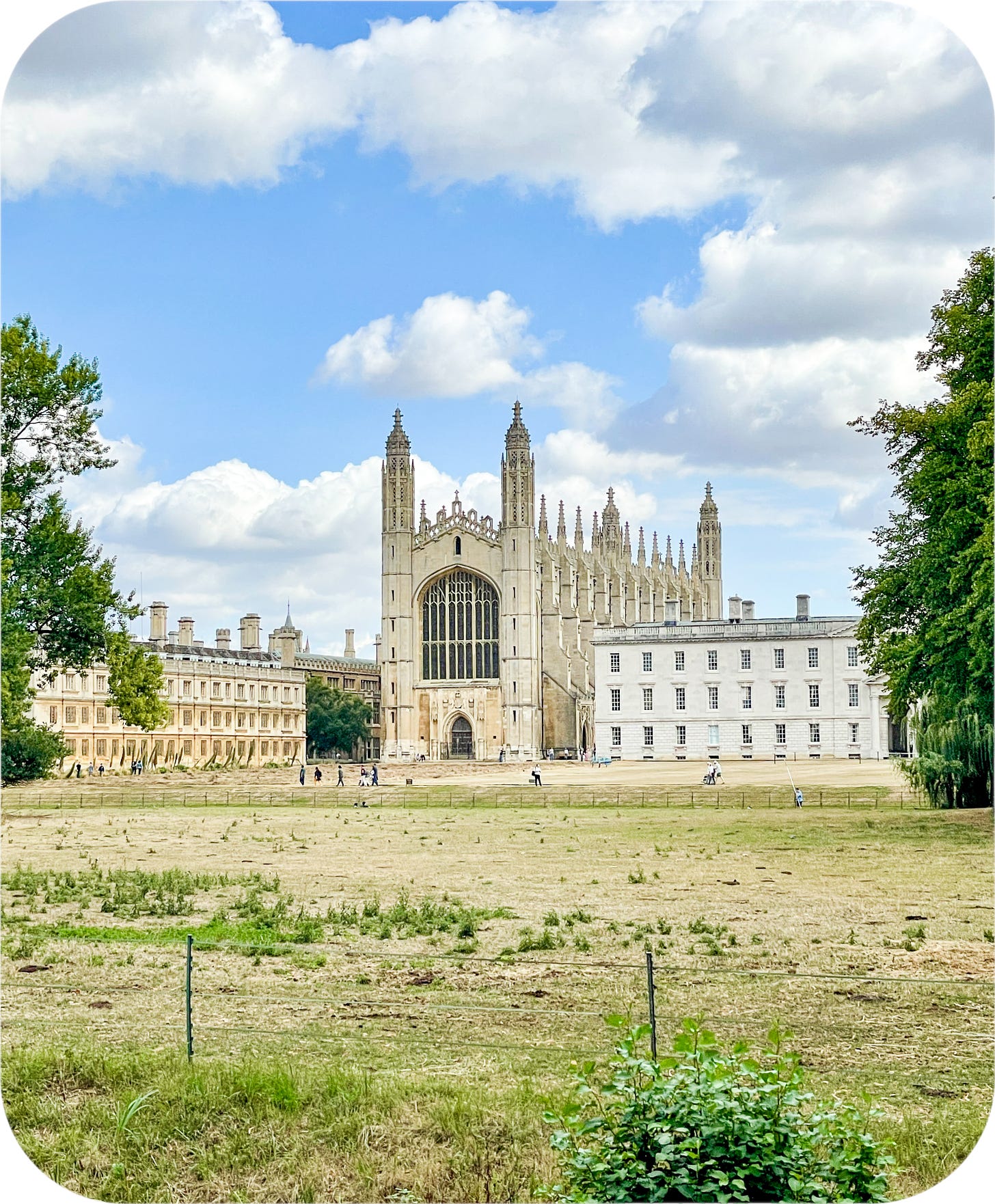

Your descriptions of Cambridge make me want to book that "Flight over the Pond!". So tempting! I often wonder what it would feel like to visit a place with such DEEP history! Of course, this country has a Native American History that we are not taught, but the recorded history of Cambridge reaches so far back in time! I'm gratified to know that so much nature and natural surroundings remain within the confines of the city.
Thanks for sharing this, Jodi. I studied at Cambridge, so it triggered lots of memories! Really miss my daily walks through King's and St. John's. Such a beautiful place at this time of year. Both my kids ended up at Oxford (my son is there now) but what can you do! I suppose it's okay there too. 😁 Thanks again. ✨️